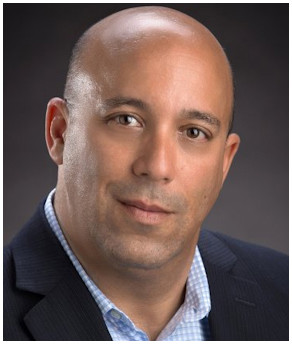New Study Shows Caps on Noneconomic Damages Hurt Patients
“The McDonald’s coffee scalding case! The absurd multi-million dollar personal injury verdicts from around the country! The flight of physicians from areas where they were needed! The horror!” So went the narrative at the turn of the millennium from those clamoring for tort reform – with a particular emphasis on medical malpractice issues. Perhaps major corporations like McDonald’s, asbestos insulation giant Owens-Corning, or the various tobacco interests should take it on the chin with major monetary verdicts against them, but heaven forbid your neighborhood doctor is held accountable.
Then, it happened. In jurisdictions across the U.S., tort reform became a legislative reality. Certain elements of tort reform had to do with procedural hurdles for potential plaintiffs, but the real teeth of tort reform was displayed in caps on noneconomic damages. Ohio was no exception, passing Ohio Revised Code Section 2323.43. As the country’s President in the late 1990’s was famous for saying, “it’s the economy, stupid.” That helps explain the rationale behind the economic focus of tort reform in medical malpractice: if you limit the amount of money the victim of medical malpractice can receive, then (1) his or her greedy attorney will receive less, (2) those terrible, greedy attorneys will bring fewer lawsuits, and (3) then we will have fewer medical malpractice lawsuits and cheaper healthcare costs. Allegedly, it was pure economics – we can save the average patient and society money with the pen stroke of the Governor.
Using the plaintiff’s attorney as a convenient scapegoat, as opposed to focusing on taking money out of the hands of injured people, caps on noneconomic damages were alleged to work something like this. Prior to tort reform, a jury might find that a victim of medical malpractice sustained $200,000 in economic damages (things like lost wages and medical expenses) and sustained another $800,000 in noneconomic damages (things like pain, suffering, and loss of companionship). That would be a $1 million verdict. But keep in mind that almost all medical malpractice attorneys advance the entire cost of litigation (which can reach well into six figures), and assume all the risk of litigation in exchange for a contingency fee – which means they get nothing and are not reimbursed for litigation costs unless they win the case or reach a settlement. This means there is a lot of calculated risk involved for a plaintiff’s advocate.
Now assume that Ohio Revised Code Sec. 2323.43 is passed and limits the previously-mentioned noneconomic damages to $350,000. Even if the plaintiff is successful, that reduces the potential damages to the plaintiff and contingency fee to the plaintiff’s attorney by at least 45%. That loss greatly impacts the attorney’s calculated risk. It also makes it very difficult to represent an individual who is indigent or has a very low potential loss of income such as retirees, homemakers, or those who earn minimum wage. Where’s the public benefit in that scenario?
Advocates of tort reform have long alleged that the noneconomic damages not paid in that scenario would go back into the system and provide lower healthcare costs. They further claimed that the lessening of damages and “frivolous” lawsuits would allow health professionals to provide better care. Unfortunately, the evidence doesn’t seem to prove those assertions at all.
As a recently published report by the Center for Justice & Democracy at New York Law School has demonstrated, caps on noneconomic damages are actually serving as an injustice for everyone. In fact, no less than three studies showed that states that adopted caps on noneconomic damages experienced (1) more medical errors and higher health care costs, and (2) no tangible increase in primary care physicians.
Where it was once claimed that healthcare professionals would practice better medicine with caps in place, the studies found that patient safety consistently fell in such jurisdictions. Even prior to recent increases in healthcare costs, the studies found that healthcare costs in cap-adopting states featured “4-5% higher Medicare Part B (physician) spending” from 2002-2005. Finally, the studies found no correlation between states that adopted caps and the retention of primary care physicians. Flatly put, healthcare professionals all have malpractice insurance, and it protects both patients and professionals when mistakes are made. Caps on noneconomic damages are not improving care or causing physicians to flock to certain jurisdictions. Caps just fatten the bottom lines of insurance companies and line the pockets of its rich executives
It is important to remember that the information presented here should not deter anyone reading it from seeking compensation for their injuries resulting from medical malpractice. For one thing, there is existing case law in Ohio which has found similar caps on damages unconstitutional, and the law is an ever-changing entity. Several states recently have found such caps to be illegal. Furthermore, there are innovative professionals like life care planners who are trained to quantify the everyday economic impact of an injury due to medical malpractice. They can also assist juries and judges in understanding the necessary economic costs and obligations involved in life-long treatment. Proper use of these professional can help buttress economic claims, which may help counterbalance uncompensated, noneconomic losses. No piece of legislation can tell you how to feel or what to do after suffering a serious injury due to medical malpractice. If you or a family member is a victim of medical malpractice, call the Ohio medical malpractice attorneys at The Eisen Law Firm to schedule a free initial consultation at 216-687-0900 or online.




